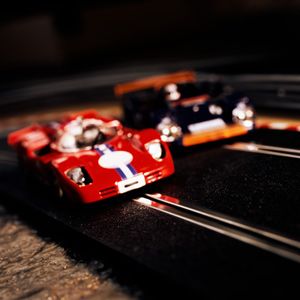Building model cars has been a longtime hobby of car enthusiasts both young and old, but most model cars, whether built for display or to be raced, don't quite stack up to the sheer speed that tether car racing produces. Tether cars are built for maximum speed, which is why some people describe them as bullets on wheels, rather than cars. The world record for the top tether car speed is 214 miles per hour (344.4 kilometers per hour), well above the top speed of most model cars and perhaps more impressively, well above the top speed of most full-size cars [source: AMRCA].
Tether car racing is so named because each car races while tethered to a pole. The cars race individually on a circular track while attached to the center pole by a steel wire. Similar to rally car competition, the cars race individually and the winners of the tether car races are determined based on average speed of several laps. Once the cars get up to top speed, they can exert a force of about 91 Gs. That means the car is pulling away from the pole with a force about 91 times heavier than its own weight.
Advertisement
Although tether cars reach extremely high speeds, the actual construction of the cars and time spent building them is the true focus of the hobby. Each car, called a racer, has many of the same components of a real car, but on a much smaller scale. The cars easily come apart so they can be worked on. Those who build and race the cars are called drivers and they constantly modify and tweak the cars to outperform others on the track. Each car receives many hours of preparation time and testing before a race.
Tether car racing earns a certain unique cachet among other types of model car building, because of its long history and unique style of racing. On the next page, we'll learn how tether car racing got its start and what historical event propelled the hobby.
Advertisement





